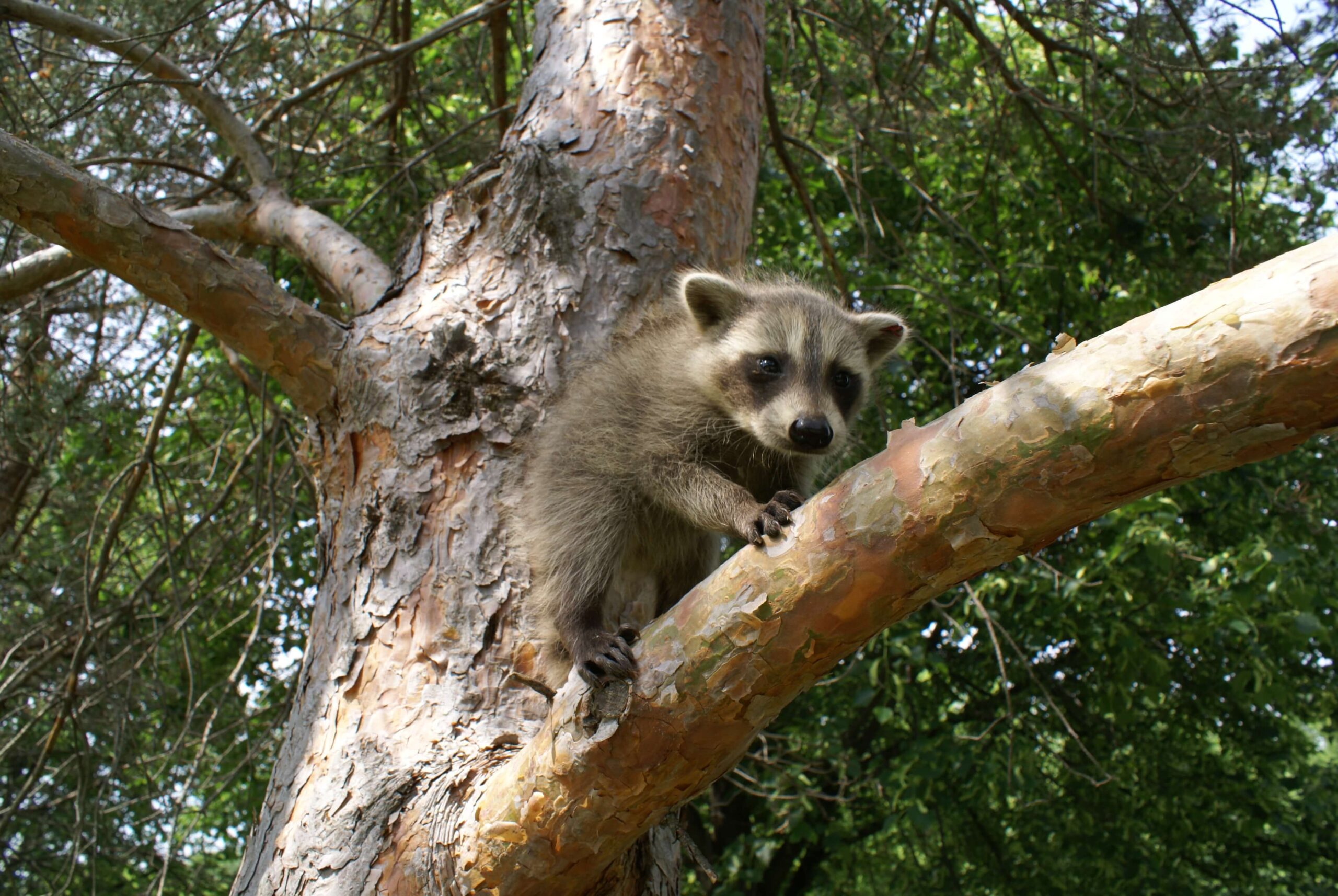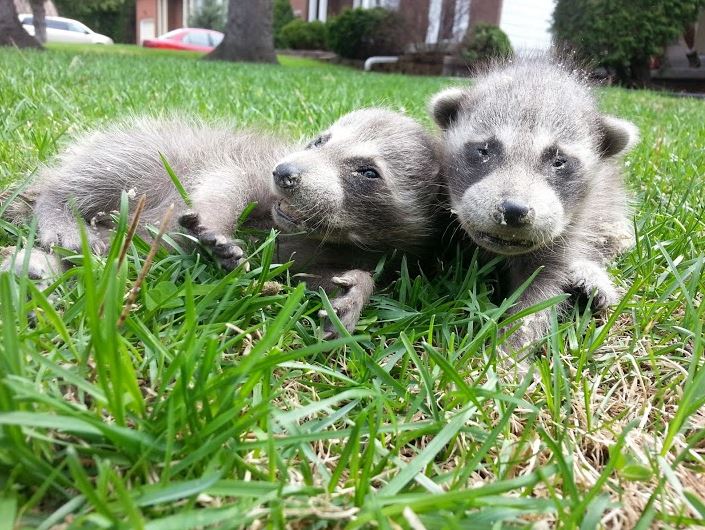Raccoons, coons or masked bandits, are probably the most recognized animal in North America. They have many interesting features that are very interest. We’ve collected some of the most interesting below.
- The raccoon’s scientific name, Procyon lotor, means “washer dog” although it is a closer relative to the bear family.
- Raccoons have a large array of vocalizations. Scientists have determined that they can make over 51 different sounds! They purr, whistle, growl, hiss, scream and even whinny.
- In spring, female raccoons give birth to three or four young. The baby raccoon’s (officially called ‘kits’) eyes do not open until 20 days or so after birth. It won’t have rings on its tail, or a mask around its eyes, until it’s older. Baby raccoons stay in the den for eight to ten weeks. The mother raccoon is very protective of her babies—she won’t even let the father near them. They are weaned by 8 weeks, and soon after will go on foraging trips with their mother. She will teach them how to climb, swim and find food. This is the only time you will typically see groups of raccoons together.
- On the mammal IQ scale raccoons rank higher than cats and just below monkeys.
- The raccoon has the ability to rotate their hind feet a full 180 degrees to allow for their ability to climb down from trees head first.
- Before eating, the raccoon is sometimes seen rubbing the food between its paws and even dipping it into water, as though it was washing it. Researchers don’t believe they are washing it but suggest they may be examining it and removing any unwanted parts. Water is thought to increase their sense of touch.
- A raccoon can run at speeds of up to 15 miles per hour.
- Raccoons have amazing and quick learning skills. They can memorize the solution of complex mechanism for three years and they can also identify and differentiate between different symbols.
- They den in hollow trees, caves or burrows and are also known to move into muskrat house. However, they never build their homes more than 1200 feet from a permanent water source.
- Raccoons are omnivorous animals. They also eat acorns, leaves, grasshoppers, crickets, worms, frogs, clams, turtles, and their eggs, snakes, fish, and squirrels. In urban areas, they survive on garbage and are sometimes seen eating the road kills.
Got Racoons? We make them Skedaddle! Contact us at: 1-877-222-9453
Proudly serving: Barrie, Belleville, Coquitlam, Durham Region, York Region, Greater Vancouver, Halifax, Hamilton, Kitchener-Waterloo, London, Mississauga, Montreal, Niagara, Oakville, Okanagan Valley, Ottawa, Sudbury, Toronto, Truro, Woodbridge, Waukesha, Madison, Milwaukee.




